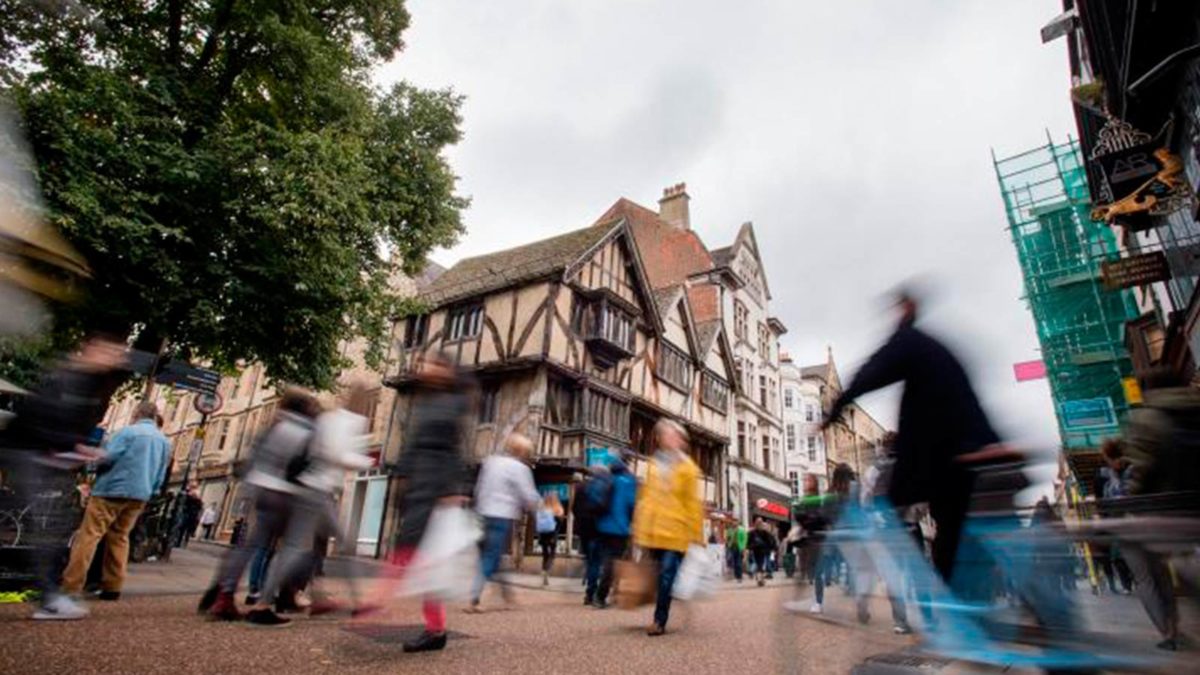
OxLEP-backed Local Growth Fund supported project set to further enhance ‘cleaner’ connectivity in Oxford
The Oxfordshire Local Enterprise Partnership (OxLEP) have today (27 April) revealed that works on phase one of a new project – set to boost ‘cleaner’ modes of commuting in Oxford, as well as connectivity options in-and-out of the city – continues to make positive progress.
The project – which is supported by funding from the Government’s Local Growth Fund – will see the construction of improved cycle and pedestrian paths located to the west of the city, with routes leading in-and-out of Oxford city centre, via Osney Mead.
Over the coming months, work will continue on the first stage of the overall project. Once finished, it is hoped the network will enhance connections in-and-out of the city and will encourage many of the thousands of commuters – who enter Oxford on a daily basis – to consider using cleaner and healthier modes of transport, as well as enhancing the experience of those who currently walk, run or cycle in the city.
Work began on the first stage of the project in early-March this year.
OxLEP hopes the network will also help to make a positive impact on reducing the current level of carbon emissions generated along some of the city’s main transport routes.
The project aligns closely with the aim of the county’s energy strategy – launched by OxLEP in November 2019 – which sets out a desire to reduce countywide emissions by 50% by 2030, compared with 2008 levels.
In addition, the project sits favourably with a target created by the group behind the Zero Carbon Oxford Charter, which aims to see the city achieve net-zero carbon emissions by 2040.
Away from connectivity, the project will complement future plans – set out in the Oxfordshire Local Industrial Strategy – for the county to become a top-three global innovation ecosystem by 2040, with the measures playing an important role in supporting the development of the new Osney Mead Innovation Quarter.
The Innovation Quarter will see the city benefit from the creation of new cutting-edge research facilities, commercial space and accommodation totalling over 20,800m2 of space.
The first stage of the transport improvements, and the wider Innovation Quarter project, are both being delivered by the University of Oxford.
Better cycle and pedestrian paths will help achieve the University’s environmental targets by enabling safe, sustainable travel around the city, while the Innovation Quarter will create jobs and drive economic growth – both locally and nationwide – by encouraging the commercial application of University researchers’ expertise.
OxLEP secured £1.7million-worth of funding for the connectivity works via the Government’s Local Growth Fund.
OxLEP is one of 38 Local Enterprise Partnerships (LEPs) in England playing a key role in driving forward economic growth and – by 2021 – it’s expected that central Government will have invested over £12billion into the UK economy via the Local Growth Fund.
The Local Growth Fund investment aims to allow LEPs to use their local knowledge to promote growth in their individual regions. Analysis has shown that for every £1 of Local Growth Fund invested, £4.81 in benefits could be generated.
Since its inception in 2011, OxLEP – with its partners – has secured around £660m-worth of government funding for Oxfordshire, which has seen more than 48,000 new jobs created in the county to-date.
In total, OxLEP currently oversees a £2.2bn growth programme for the county.
Nigel Tipple – Chief Executive of OxLEP – said: “The confirmation that such a significant project has started – supporting a desire to move towards cleaner and indeed, healthier modes of commuting in and around Oxford city centre – is excellent news.
“As the local enterprise partnership for Oxfordshire, we have – and will continue to – play a critical role in securing investment for the county which will not only benefit our business community, but our wider communities too.
“Such investment not only boosts greener forms of connectivity, but also, complements existing infrastructure, helping to unlock critical key assets that will back our economic recovery from COVID-19.”
It’s also hoped that the Osney Mead Innovation Quarter will create greater opportunities for employment, as well as attracting investment and stimulating growth and regeneration in Oxford.
Dr Phil Clare, Deputy Director for Research Services (Knowledge Exchange and Engagement) at the University of Oxford, added: “We want to transform Osney Mead from an underused industrial estate into a vibrant community that brings researchers and entrepreneurs together to foster innovation and address the biggest challenges facing humanity, whether these relate to clean energy or zero-carbon flight.”
More in Community Building

A Growing Desire for Better Business
The Better Business Ecosystem is raising awareness and showcasing the wide variety of ways businesses can have a more positive impact on society, communities and the environment, by embedding great business practices across their companies.

Why joining a community of business leaders can enhance your reputation and credibility
I read a LinkedIn post recently that reassured business owners that if they’d managed to keep their businesses going during recession, Brexit, COVID and the cost-of-living crisis that they deserved a huge pat on the back and shouldn’t ‘beat themselves up’. Easier said than done when costs are rising and doing business seems to get harder rather than easier, but the sentiment was well-placed.

Why it’s important for Business Leaders to be exposed to new...
Nobody likes a ‘know it all’ and let’s face it, there’s no such thing. At the other end of the scale, many of us don’t create enough time to take on board new ideas, innovation and creativity in whatever format. How many times have you been recommended to read a book, get sent the link, go on Amazon, maybe even buy it but it just sits on your bookshelf? Come to think of it, as an aside, just think about that for a second….I wonder what the actual percentage of books purchased are actually read? Frightening thought!
From this author

Strategic Marketing Campaigns Commissioned – to support Oxfordshire’s visitor economy –...
A series of targeted marketing campaigns to promote Oxford and Oxfordshire have been commissioned with both Experience Oxfordshire and Cotswolds Tourism securing contracts to deliver the nine campaigns.

‘One year on from ‘Billion Tonne Drop’-themed conference, Oxfordshire has an...
On Tuesday 9 November 2021, OxLEP hosted an official COP26 roadshow event on the Presidency’s ‘Science and Innovation’ Day, titled ‘’The Billion Tonne Drop – How Oxfordshire leads the global charge to address the climate emergency’.

OxLEP Skills: Opportunities for Oxfordshire Employers 2022-2023
If you were ever wondering what opportunities there were for Oxfordshire employers to engage with future generations, look no further.

